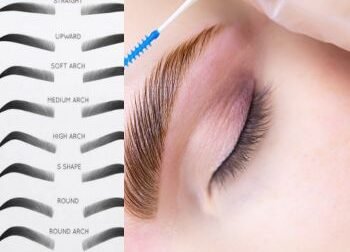DIY Moisturizers for Dry Skin: Easy Recipes for Hydration
- August 14, 2024
- Uncategorized
- 7 mins read
DIY Moisturizers for Dry Skin: Easy Recipes for Hydration
Dry skin can be a persistent challenge, especially during colder months or in dry climates. Finding the perfect moisturizer can sometimes feel like a quest, but what if you could make your own? moisturizer for dry skin diyn offer a customizable, cost-effective solution tailored to your skin’s needs. In this blog, we will explore various moisturizer for dry skin diy recipes, highlighting the benefits of each ingredient and guiding you through simple steps to achieve hydrated, glowing skin.
Why Choose DIY Moisturizers for Dry Skin?
Before diving into the recipes, let’s explore why a DIY moisturizer for dry skin DIY might be your best choice. Many commercial moisturizers contain synthetic ingredients and preservatives that might not be suitable for sensitive skin. On the other hand, DIY moisturizers use natural ingredients that can provide deep hydration and nourishment. By creating your products, you have complete control over what goes on your skin, ensuring it’s free from harmful chemicals and tailored to your specific needs.
Basic Ingredients for DIY Moisturizers
Creating a DIY moisturizer for dry skin DIY involves using ingredients that are known for their hydrating properties. Here are some common ingredients to consider:
- Coconut Oil: Rich in fatty acids, coconut oil helps lock in moisture and protect the skin’s barrier.
- Shea Butter: Packed with vitamins A and E, shea butter is excellent for moisturizing and soothing dry skin.
- Aloe Vera Gel: Known for its soothing properties, aloe vera gel hydrates and helps heal dry, irritated skin.
- Honey: A natural humectant, honey draws moisture into the skin and has antibacterial properties.
- Jojoba Oil: Mimicking the skin’s natural oils, jojoba oil provides hydration without clogging pores.
DIY Moisturizer for Dry Skin Recipes
1. Coconut Oil and Shea Butter Moisturizer
Ingredients:
- 2 tablespoons of coconut oil
- 2 tablespoons of shea butter
- 1 tablespoon of almond oil
- 5 drops of essential oil (optional, for fragrance)
Instructions:
- In a double boiler, melt the coconut oil and shea butter together.
- Once melted, remove from heat and stir in the almond oil.
- If using, add essential oil and mix well.
- Allow the mixture to cool slightly, then whip with a hand mixer until light and fluffy.
- Transfer to a clean jar and store in a cool place.
This DIY moisturizer for dry skin DIY is incredibly nourishing and perfect for use after a shower to lock in moisture.
2. Aloe Vera and Honey Hydrating Cream
Ingredients:
- 2 tablespoons of aloe vera gel
- 1 tablespoon of honey
- 1 tablespoon of coconut oil
- 1 teaspoon of vitamin E oil
Instructions:
- In a small bowl, combine aloe vera gel and honey.
- Melt the coconut oil and mix it into the aloe and honey mixture.
- Add vitamin E oil and stir until well blended.
- Store in an airtight container and use as needed.
This DIY moisturizer for dry skin DIY combines the soothing properties of aloe vera with the hydrating benefits of honey, making it ideal for sensitive areas.
3. Jojoba Oil and Avocado Moisturizer
Ingredients:
- 1 ripe avocado
- 2 tablespoons of jojoba oil
- 1 tablespoon of honey
- 1 tablespoon of shea butter
Instructions:
- Mash the avocado in a bowl until smooth.
- Stir in jojoba oil, honey, and shea butter until fully combined.
- Apply to the face or body and leave on for 10-15 minutes.
- Rinse with lukewarm water and pat dry.
Avocado is packed with vitamins and fatty acids, making this DIY moisturizer for dry skin DIY a rich, hydrating treatment.
4. Honey and Olive Oil Moisturizing Balm
Ingredients:
- 2 tablespoons of honey
- 2 tablespoons of olive oil
- 1 tablespoon of beeswax
Instructions:
- Melt the beeswax in a double boiler.
- Once melted, stir in the honey and olive oil until well combined.
- Pour the mixture into a small jar and let it cool and solidify.
This balm is excellent for extremely dry areas like elbows and knees, providing long-lasting hydration.

Tips for Using DIY Moisturizers
- Patch Test: Always perform a patch test before applying any new DIY product to ensure you don’t have an allergic reaction.
- Storage: Store your DIY moisturizer in a clean, airtight container to prevent contamination. Most homemade moisturizers are best used within 1-2 months.
- Customization: Feel free to experiment with different oils and butter based on your skin’s needs. Essential oils can also be added for added benefits and fragrance.
Benefits of Using DIY Moisturizers
Using a DIY moisturizer for dry skin DIY has several advantages:
- Personalization: Tailor the recipe to include ingredients that work best for your skin type and concerns.
- Purity: Avoid synthetic chemicals and preservatives commonly found in commercial products.
- Cost-Effective: Many DIY ingredients are affordable and can be found in your kitchen or local health store.
Conclusion
Creating your DIY moisturizer for dry skin DIY is a rewarding and effective way to keep your skin hydrated and healthy. By using natural ingredients, you can ensure that your skin receives the best care without any unwanted additives. Experiment with the recipes provided and find the one that suits your skin the best. Embrace the benefits of DIY skincare and enjoy the satisfaction of creating your moisturizing solutions.
With the right ingredients and a bit of creativity, your skin can remain soft, supple, and beautifully hydrated.
DIY moisturizers offer benefits such as customization to your specific skin needs, the use of natural and pure ingredients, and cost-effectiveness. They avoid synthetic chemicals and preservatives that might irritate sensitive skin.
Most DIY moisturizers should be used within 1-2 months. Store them in a clean, airtight container and keep them in a cool, dry place to extend their shelf life.
Yes, DIY moisturizers can be tailored for sensitive skin by using gentle, natural ingredients like aloe vera and honey. Always perform a patch test before applying to ensure you don’t have an allergic reaction.
For optimal results, apply your DIY moisturizer at least twice daily—once in the morning and once before bed. You may need to apply it more frequently depending on the severity of your dryness.
Yes, essential oils can be added to DIY moisturizers for added benefits and fragrance. However, make sure to use them sparingly and choose oils that are safe for your skin type.
Avoid using ingredients that might irritate your skin, such as strong fragrances or potentially allergenic oils. Always choose high-quality, natural ingredients that are suitable for your skin type.
Absolutely! DIY recipes are highly customizable. You can adjust the ingredients based on your skin’s specific needs and preferences, such as substituting oils or adding other beneficial ingredients.
Apply a small amount of the DIY moisturizer to a small area of your skin, such as the inside of your wrist or behind your ear. Wait 24 hours to see if any redness, itching, or irritation occurs.
Yes, DIY moisturizers can be used on various parts of your body, including your face, hands, and body. Choose recipes suited to the specific area you plan to treat.
If your DIY moisturizer doesn’t seem to be effective, consider tweaking the recipe or trying a different combination of ingredients. Skin needs can vary, so it may take some experimentation to find the best formula for you.



